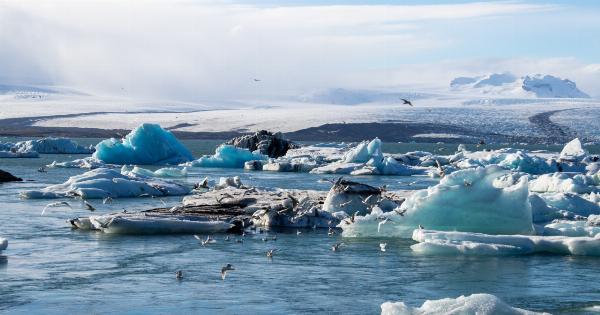Longer, hotter summers have become a growing concern in recent years, with increasing global temperatures leading to widespread impacts on ecosystems, human health, and the environment.
This article explores the causes and consequences of longer, hotter summers, highlighting the research of prominent scientist Dr. Costas Synolakis.
Causes of Longer, Hotter Summers
The primary cause of longer, hotter summers can be attributed to climate change, specifically the rise in global temperatures. Dr.
Costas Synolakis, a renowned seismologist and climate scientist, has extensively studied the factors contributing to this phenomenon.
1. Greenhouse Gas Emissions
One of the main drivers of climate change is the increased concentration of greenhouse gases in the atmosphere.
Human activities, such as burning fossil fuels and deforestation, release significant amounts of carbon dioxide (CO2) and other greenhouse gases into the air. These gases trap heat radiated from the Earth’s surface, leading to a warming effect known as the greenhouse effect.
2. Melting Arctic Ice
The melting of Arctic ice due to rising temperatures is another contributing factor to longer, hotter summers. As the ice cover shrinks, more sunlight is absorbed by the dark ocean waters, intensifying warming trends.
This phenomenon, known as Arctic amplification, has a profound impact on global climate patterns, including the duration and intensity of summers.
3. Changes in Atmospheric Circulation
Changes in atmospheric circulation patterns, such as the jet stream, also play a role in longer, hotter summers. The jet stream is a high-speed air current that flows around the Earth, primarily in the mid-latitudes.
As global temperatures rise, the temperature gradient between the Arctic and lower latitudes decreases, causing the jet stream to weaken and meander. This can lead to prolonged periods of weather patterns, such as heatwaves or droughts.
Consequences of Longer, Hotter Summers
The prolonged duration and increased intensity of summers have far-reaching consequences for various aspects of the environment and society. Dr.
Costas Synolakis has conducted extensive research on these impacts, shedding light on the urgency of addressing climate change and implementing mitigation strategies.
1. Ecosystem Disruption
Longer, hotter summers pose a significant threat to ecosystems worldwide. Increased temperatures can disrupt delicate ecological balance, leading to shifts in species distribution, altered migration patterns, and an increased risk of species extinction.
Heatwaves and extended droughts can also result in reduced water availability, jeopardizing the survival of both flora and fauna.
2. Human Health Risks
Rising temperatures and prolonged summers have direct implications for human health.
Heat-related illnesses and deaths are on the rise, particularly among vulnerable populations, such as the elderly, children, and individuals with pre-existing health conditions. Extreme heat can also worsen air quality, leading to respiratory problems and exacerbating conditions like asthma and allergies.
3. Agricultural Challenges
Longer, hotter summers pose significant challenges to agricultural systems worldwide. Excessive heat and drought can lead to reduced crop yields, crop failures, and increased vulnerability to pests and diseases.
These climatic changes also impact livestock and can lead to water scarcity, food insecurity, and economic instability in farming communities.
4. Increased Wildfire Risks
Extended periods of hot and dry weather increase the likelihood and severity of wildfires. Higher temperatures promote the drying of vegetation, creating ideal conditions for wildfires to spread rapidly.
The increasing frequency and intensity of wildfires have devastating effects on ecosystems, air quality, infrastructure, and human lives.
Addressing Longer, Hotter Summers
To mitigate the effects of longer, hotter summers and combat climate change, actions must be taken at an individual, national, and global level. Dr.
Costas Synolakis emphasizes the importance of reducing greenhouse gas emissions, transitioning to renewable energy sources, conserving water resources, and implementing sustainable land management practices.
1. Transition to Renewable Energy
Shifting from fossil fuels to renewable energy sources, such as solar and wind power, is crucial in reducing greenhouse gas emissions that contribute to global warming.
Investing in renewable energy technologies not only helps combat climate change but also promotes job creation and fosters energy independence.
2. Conservation and Efficient Resource Use
Conserving energy and using resources efficiently can have a significant impact in addressing longer, hotter summers.
Simple actions such as using energy-efficient appliances, reducing water consumption, and practicing responsible waste management can contribute to reducing the carbon footprint and mitigating climate change.
3. Sustainable Agriculture and Land Management
Implementing sustainable agricultural practices, such as precision farming and organic farming methods, can help reduce the environmental impacts of agriculture while maintaining productivity.
Additionally, adopting responsible land management techniques, including reforestation and preservation of natural habitats, contributes to carbon sequestration and biodiversity conservation.
Conclusion
The reality of longer, hotter summers necessitates urgent action to mitigate the effects of climate change. Dr.
Costas Synolakis’s research has shed light on the causes and consequences of this phenomenon, emphasizing the need for global cooperation and sustainable practices. By taking collective action and implementing mitigation strategies, we can work towards a safer, more sustainable future for generations to come.




























